A tale of two polls. Why are poll results about Ohio Issue 1 so very different? | Experts
Robert Alexander is the founding director of the Ohio Northern Institute for Civics and Public Policy. He is a political science professor at Ohio Northern University.
John Curiel is an Assistant Professor of Political Science at Ohio Northern University.
Next week, Ohio voters will find out the results of Issue 1 — a constitutional measure making it harder to amend the state’s constitution.
This past week, two polls seemingly project very different results.
Before diving into why that might be, we will explain Issue 1.
What is Issue 1?
Although the Ohio legislature had chosen to essentially eliminate August elections earlier this year, they did an about-face to allow for a special election once it became clear that activists sought an abortion-related amendment for the November election.
Issue 1 has caught national attention and that of numerous polling firms. However, the uniqueness of the election makes it difficult to predict, underscoring the decisiveness of voter turnout efforts.
Ginther: Issue 1 is bad for Republicans and Democrats. It would have direct impact on Columbus.
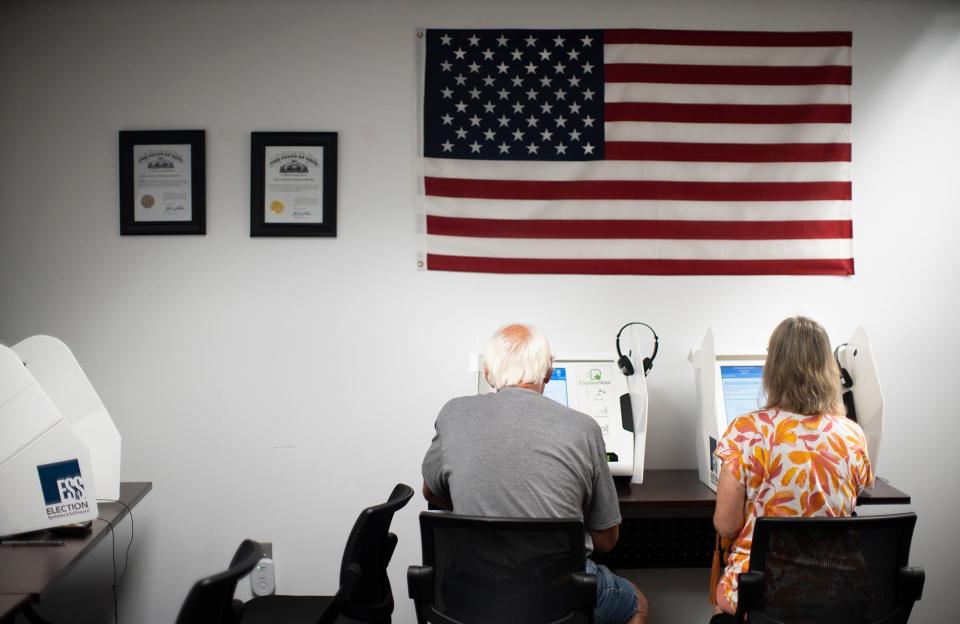
Opponents claim that Issue 1 would effectively weaken the citizen veto Ohio voters have against the legislature.
If passed, it would increase the requirement to qualify an amendment from 5% of signatures in 44 counties to 5% in all 88 Ohio counties. It would also eliminate a 10-day curing period to allow groups to correct and meet the required number of valid signatures by the filing date.
Issue 1: Cutting through the 'double talk.' 11 things to know before voting| Thomas Suddes
Lastly, it would increase the threshold to pass a constitutional amendment from a simple majority (50% plus 1) to 60%.
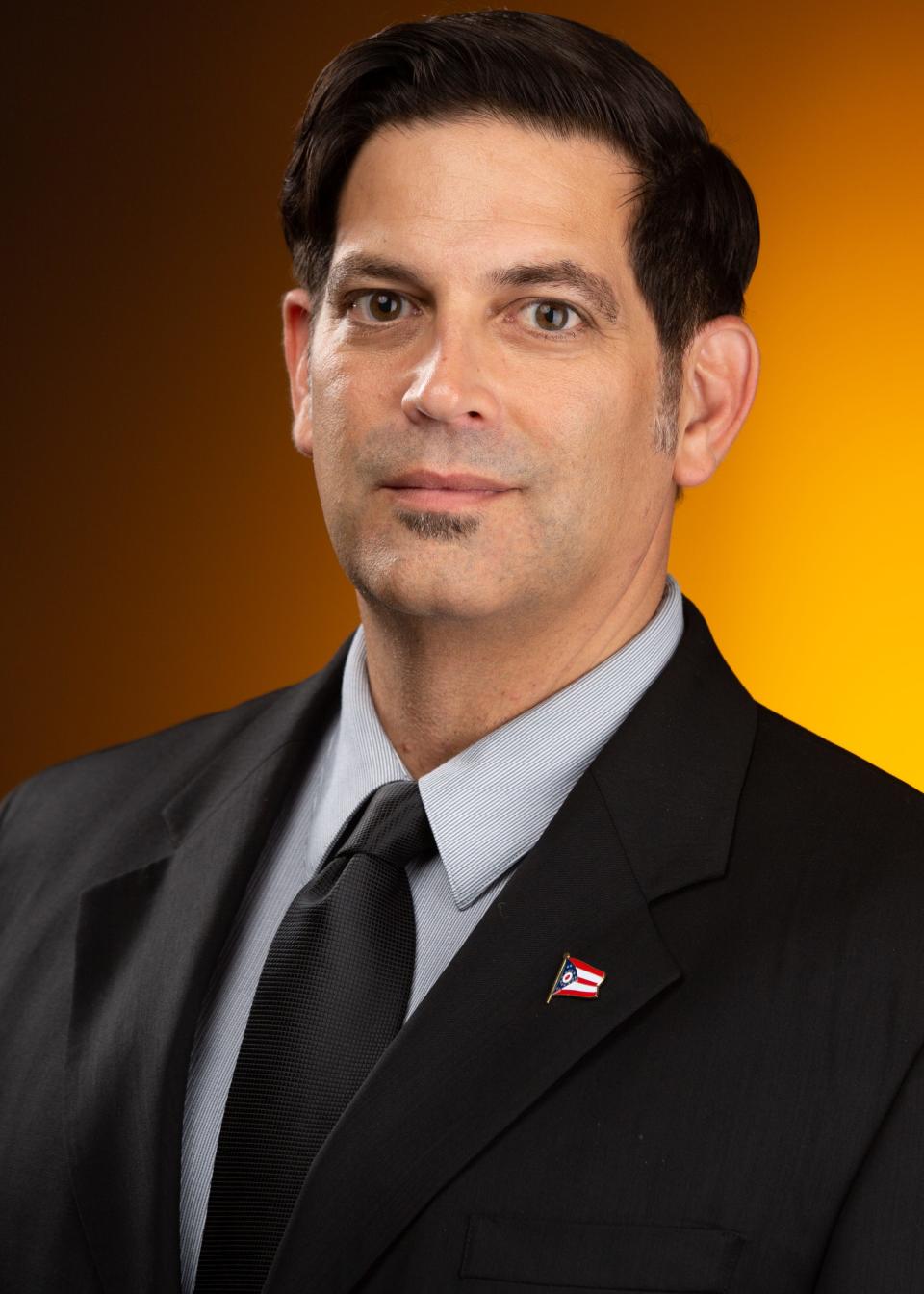
Issue 1’s outcome will have a great effect for years to come in Ohio politics, and particularly for this November’s election.
Two polls, two different outcomes
Issue 1 poll: Most Ohio voters oppose plan to make it harder to amend constitution
A Suffolk/USA Today poll finds 58% of respondents opposed to it, while a poll from Ohio Northern finds respondents seem to be evenly divided on the issue, though with a decisive minority uncertain.
As the researchers conducting the Ohio Northern poll, we believe it is important to provide readers with a bit more context about what these polls can and cannot say about Issue 1’s fate.
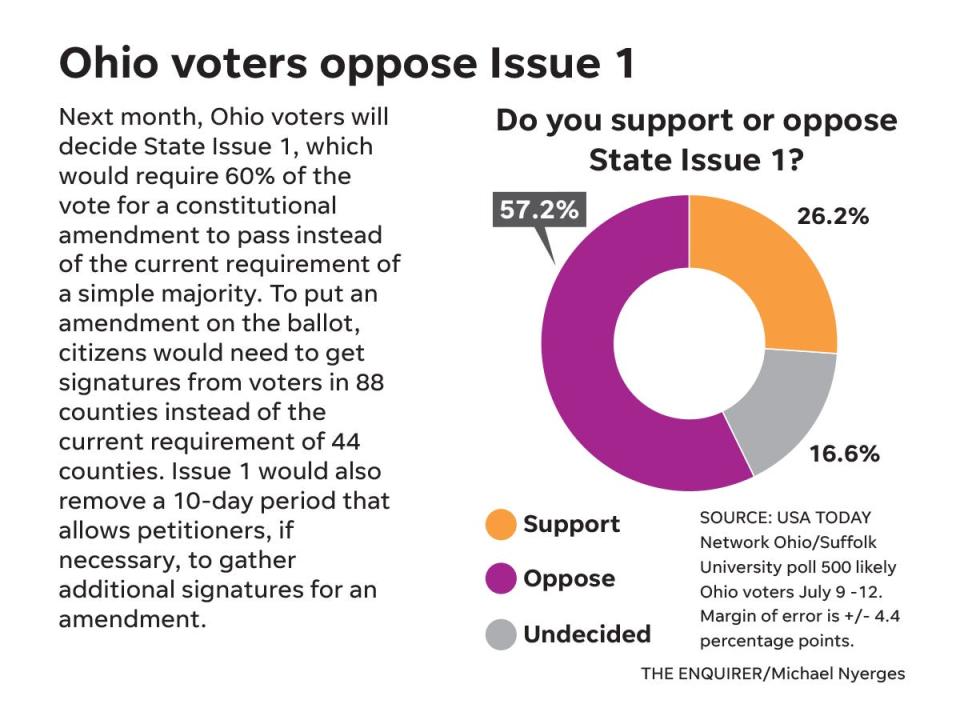
Why is this changing to gauge?
First, we caution that this particular election is incredibly difficult to predict.
It is the first August statewide election on an issue in nearly 100 years.
Most forecasts on direct democratic initiatives take for granted that they occur in regular state November election cycles. In those cases, predicting outcomes relies on modeling the vote under normal turnout models–which is absent with Issue 1.
Moreover, Issue 1 has been linked to affecting future abortion policy, further complicating forecasting an outcome.
This fact will fuel voter turnout among both more strident pro-choice and pro-life voters. Still, only voters highly educated on state politics make such connections. Surveys demonstrate that approximately half of Americans do not know that their states have constitutions or special elections. This makes modeling “likely voters” in this particular election especially difficult.
Buckeye Institute CEO: Vote 'yes' on Issue 1 to 'fend off the Californication of Ohio'
Business leader: An end to majority rule in Ohio? Issue 1 an unprecedented affront to democracy
How are the polls different?
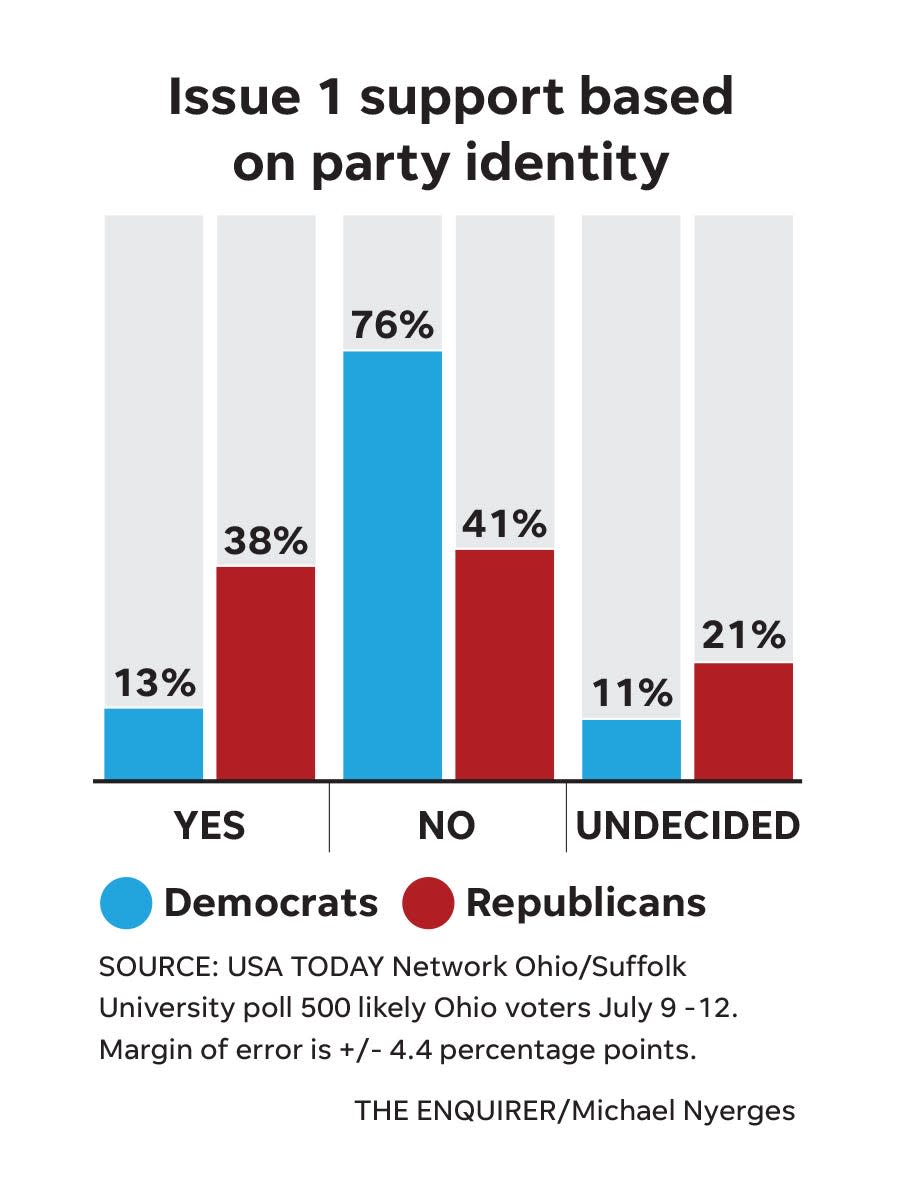
Both polls indicate they are polling “likely voters.”
In our case, we drew respondents from a list of registered voters, asked questions to confirm they were registered, and determined whether they were likely voters by asking questions related to the attention they are giving to the August election, their intention to vote in August, and their enthusiasm for voting in the election.
This is a common practice to determine likely voters, but it is imperfect–especially so in this unusual situation. As far as we can tell from the Suffolk/USA Today poll, while they screened for future likely voters, they did not screen their sample for likely August voters.
Likewise, the polls asked different questions.
The Suffolk/USA Today poll mirrored the ballot language of Issue 1, while the Ohio Northern poll focused solely on increasing the threshold from a simple majority to 60%.
There is good reason to believe that respondents are more likely to oppose a measure if they are confused or unsure about it.
The high percentage of “no” respondents in the Suffolk/USA Today poll may reflect some of that uncertainty.
Similarly, scholars find a bias toward maintaining the status quo over committing to change when it comes to ballot measures.
The fact that just 42% of respondents in our poll supported a change to a 60% threshold may not bode well for supporters of Issue 1.
It is not unreasonable to suspect that faced with uncertainty, many of the 17% of undecided voters in our sample will more than likely choose the status quo (that is a “no “vote), if they turn out on August 8.
The impact of spending
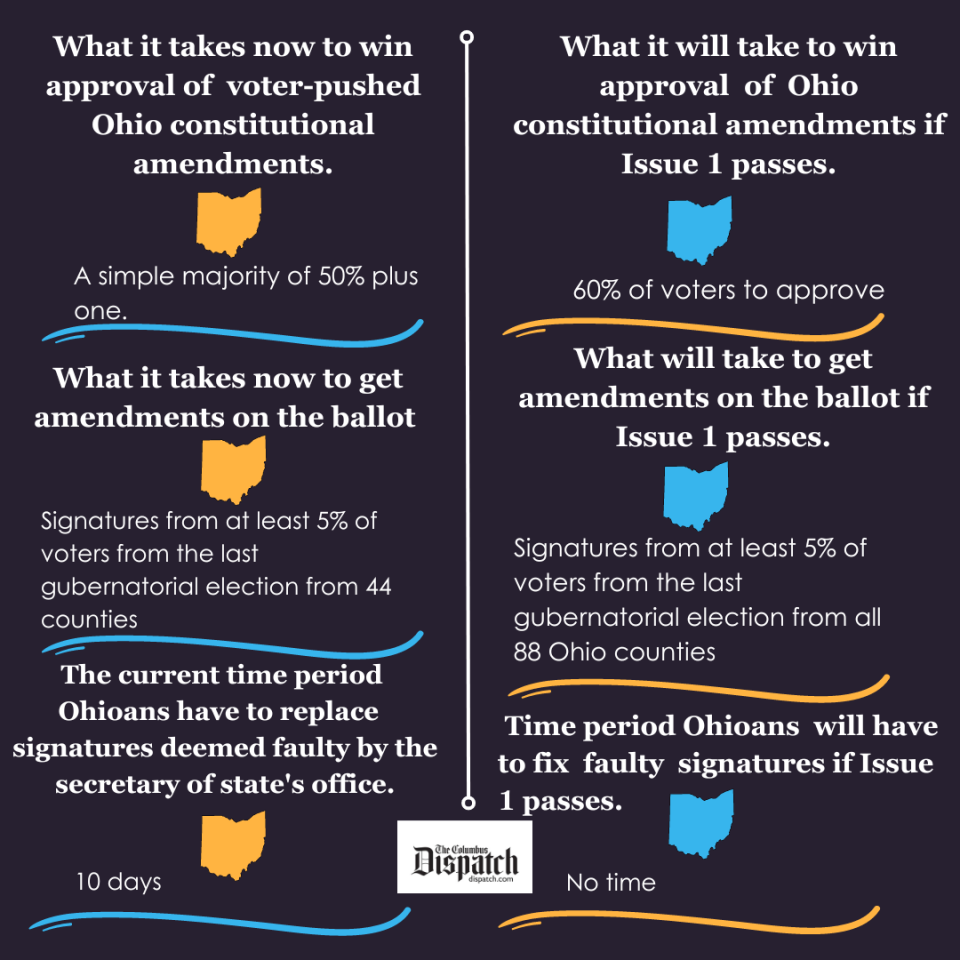
Lastly, direct democracy contests like Issue 1 tend to see campaign spending and outreach impact vote choice.
Organized interests have spent a great deal of money on Issue 1, with the official “No” campaign committee at nearly $15 million, and the official “Yes” committee spending nearly $5 million.
More: Who's funding the Ohio Issue 1 campaigns? Donors from Illinois, D.C. and California
The prevailing research in political science suggests that campaign expenditures are more likely to help maintain the status quo than to change it–suggesting money is more important in persuading citizens to vote “no” in this instance.
The same research suggests that if the “yes” vote funds comes from single wealthy individual interests, spending becomes less effective. Notably, campaign finance reports reveal that 80% of the funds for the Issue 1 “yes” vote comes from a single Illinois billionaire.
More: GOP megadonor Richard Uihlein bankrolls push to make it harder to amend Ohio constitution
Voters will decide.
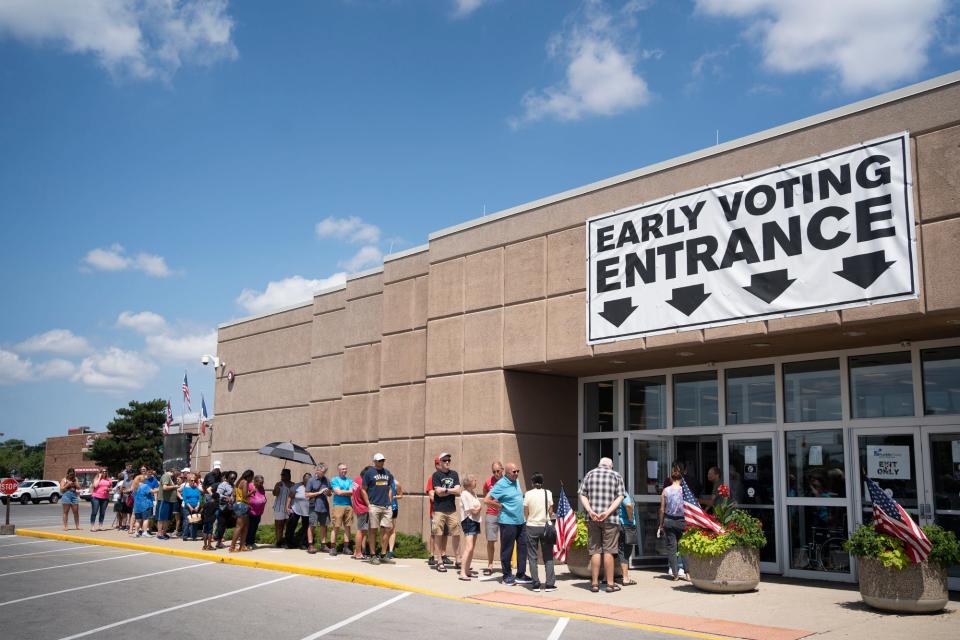
Predicting exactly who will show up and how they will vote in such a unique election is incredibly difficult and we do not pretend to know that answer.
Ultimately, the success or failure of Issue 1 is in the hands of voters and not pollsters.
While it is cliché, it really will come down to “get out the vote” efforts.
Early reports suggest turnout will be high and we believe that is a good thing. It is our hope that Ohio voters exercise their rights to determine their political future on August 8, rather than let others do that for them.
Robert Alexander is the founding director of the Ohio Northern Institute for Civics and Public Policy. He is a political science professor at Ohio Northern University.
John Curiel is an Assistant Professor of Political Science at Ohio Northern University.
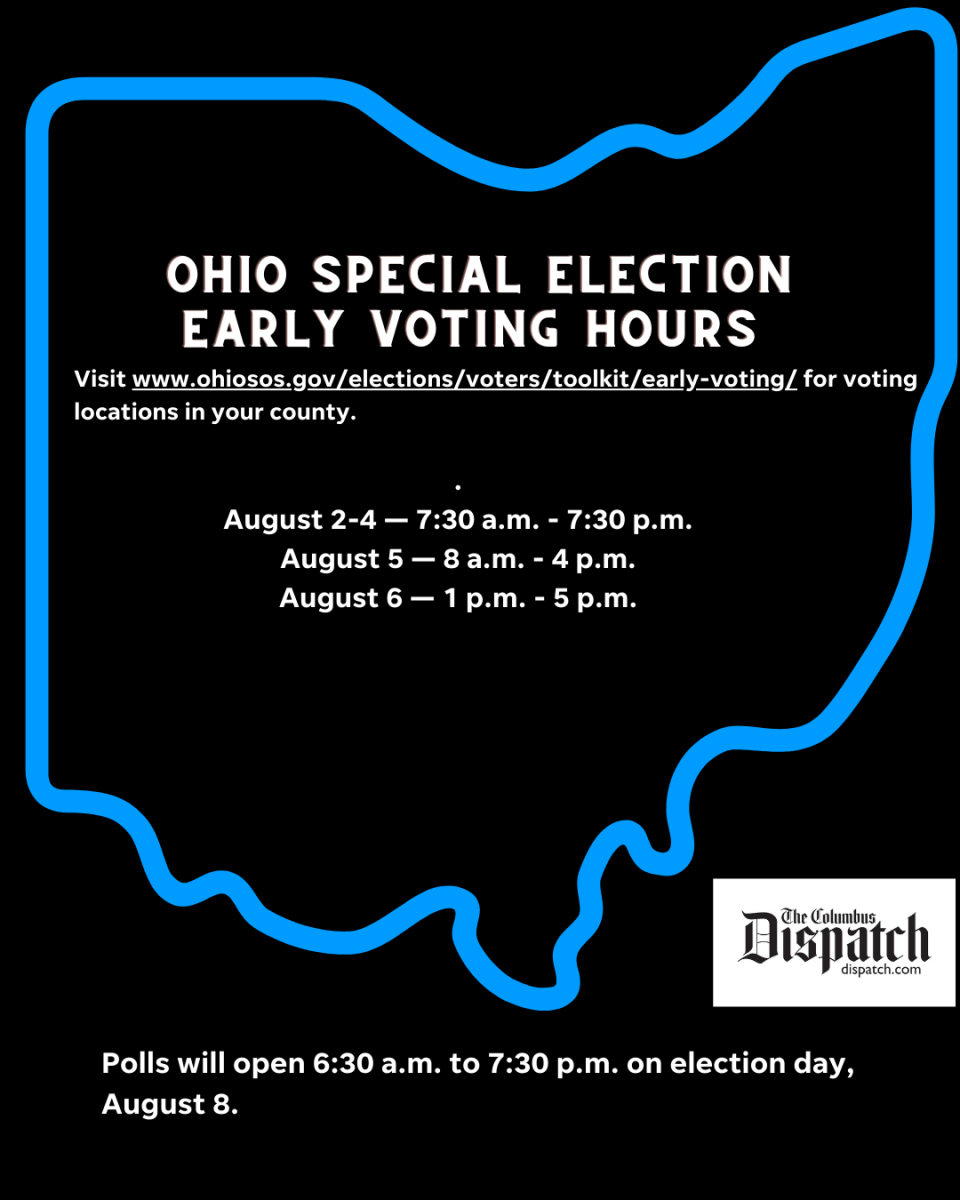
This article originally appeared on The Columbus Dispatch: August 8 election: Why are poll results about Issue 1 so different?

